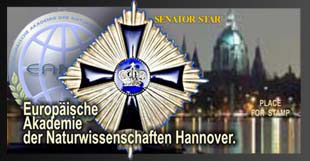 |
Европейская академия
|
| В начало | Энциклопедия ЕАЕН | |
Энциклопедия Европейской академии естественных наук |
||
 Jianguo Tang
Jianguo Tang
Professor Jianguo Tang is a world-wide famous scientist on hybrid materials, as the founder and the pioneer of hybrid materials. He created the core science of hybrid materials to obtain the compatibility among heterogeneous components that are essentially exclusive, and he constructed a series of stable nanoaggregates of heterogeneous components, to set up the photon/electron confinement energy exchange. Thus, he achieved both the essentially stable nanoaggregates and the excellent photon quantum energy conversion performance in these nanoaggregates. He innovated the strategies, such as, metal ion-induced polymer aggregates (MIPA), in-situ embedment of semiconductor quantum dots in polymers, reconstructed carbon nanotubes to load metal ions or semiconductor nanoclusters as luminescent centers, etc. He dissolved the global problem of electron transition energy being quenched by neighboring heterogeneous atoms/groups, thus he enabled block polymers, natural glycans, proteins (or DNA) to be wide range of host materials for these hybrid systems. Then he made lanthanide ion complexes, transition metal ion complexes, nano metals, quantum dots, up-conversion nanocrystals to be highly fluorescent centers in these hosts. These are the milestones to indicate the photon quantum technologies of hybrid materials. He obtained more than 30 funding grants including the national key fundamental project (973 plan), the key national research and development projects, the national natural science foundation of China (NSFC), as well as local governmental projects. He published 304 SCI papers, and authorized 90 innovation patents in China in which two were authorized in US and Europe respectively. He realized the industrial production of the nanoaggregate wearable technology, with bacteria-sensing and heavy metal sensing properties through photon-energy interactions with these bio/env-species, which means the human dream realization of fabric to be sensors.
On the other hand, he has deep and wide collaborations with European scientists. He has one year visiting research in Buyreuth University, Germany, from Oct. 2000 to Oct. 2001.Then, he sustained and explored the collaboration with the European scientists from Sweden, Ukraine, Belarus, and Germany.
| Энциклопедия ЕАЕН |